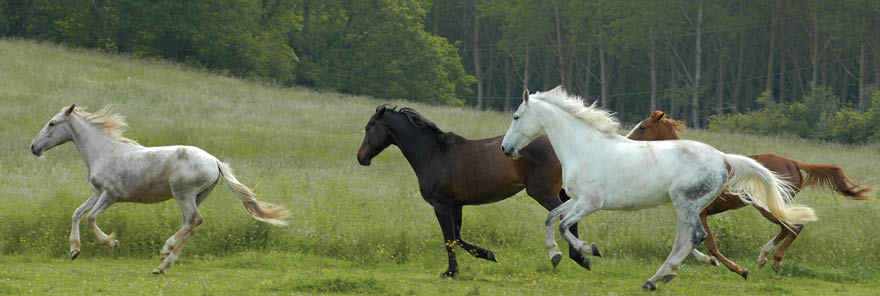The turnout debate:
After several months of lockdowns and social isolation, people around the world have become increasingly aware of the effects of prolonged confinement on mental health. So, when a renowned Grand Prix rider announced that she was not giving her horses any turnout in order to avoid potential field injuries, it sent the internet into an uproar. Social media users were quick to point the finger at her disregard for her horses’ well-being and mental health. She defended that, while her horses do not get field turnout per say, they leave their stalls several times a day, including for exercise (riding), hacking, walking on a treadmill, and hand grazing.
The question of “how much turnout should horses get” continues to be a heated debate in the equestrian world. On the one hand, it has been recognized that allowing horses free movement in the field helps stimulate their gut function and improves their digestive health, thereby avoiding potential colic. Other aspects, such as mental health and energy management, have also been shown to benefit from regular turnout.
Conversely, a study conducted by The Horse Trust (a UK equine charity) suggests that over 60% of injuries happen in the field, supporting concerns that some horse owners have when leaving their horses out in the pasture.
Interestingly, a 2021 study by the Journal of Equine Veterinary Science suggests an inverse relationship between turnout time and the risk of soft tissue injury, showing a significantly smaller number of injury incidents with horses who were turned out for over 12 hours per day, compared to horses turned out for shorter periods.
This raises the question – Is there a middle ground, one where we can allow horses social time out in the field, while minimizing risk of injuries?
What can we do to minimize field-related injuries?
Here are a few important steps we can take to help prevent field injuries and improve safety of our horses:
- Improve field safety: Ensure fences and gates are checked regularly and remove all potential hazards, including barbed wires, pieces of metal and other objects, as well as poisonous plants.
- Check terrain quality: Make sure to check for terrain irregularities, look out for ditches/holes and remove rocks that could potentially cause injury.
- Build a shelter: All horses in fields must have access to a shelter in case of adverse weather events, or access to shade on a hot summer day. In addition, having two points of entry to the shelter may help diffuse tension between horses.
- Introduce your horse to the herd: Facilitate an introduction between your horse and his new field buddies in advance. Then, make sure you keep a close eye on the herd dynamics in the first few days to make sure they get along.
- Gradually introduce your horse to the pasture: This is especially important for horses that are used to being kept indoors. Gradually introducing your horse to grazing in a new lush pasture is important to avoid potential colic and laminitis- starting with a couple of hours a day to get your horse used to new feeding habits.
- Stick to a good feeding strategy: Spread out hay and feed so that each horse gets its own stack to prevent competition and fighting over food.
- Check your horse after each turnout: Look for potential injuries, missing shoes, tick bites, swelling, etc.
While it is understandable that professional riders and other horse owners would want to prevent field injuries by limiting turnout, prioritizing our horses’ well-being and mental health will go a long way in improving performance and overall health. If we have can find ways to minimize risks of injuries, after all, shouldn’t we let horses… be horses?
Related Equine Facility Design posts:
Does your horse spend most of his time indoors? We recommend reading up on our related blog posts:
How big should your horse stall be: https://equinefacilitydesign.com/facility-planning-design/big-horse-stall.htm
How to keep indoor horses happy: https://equinefacilitydesign.com/equine-care/keeping-indoor-horses-happy.htm


